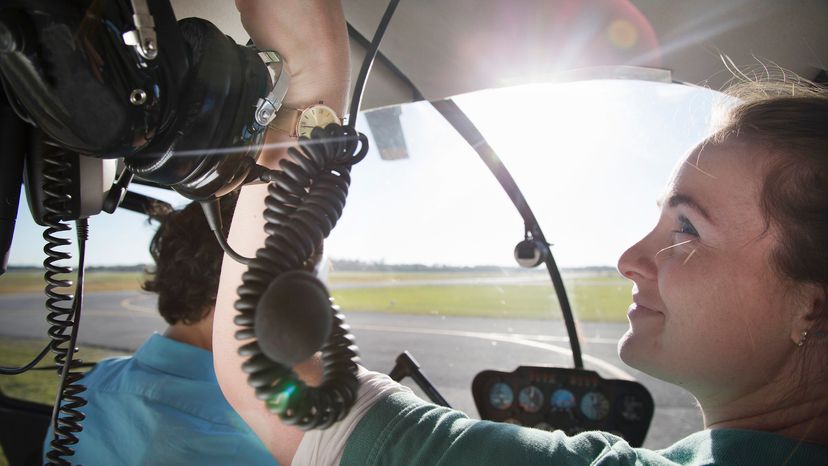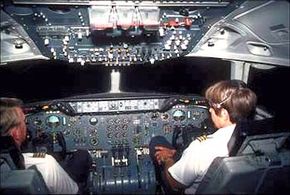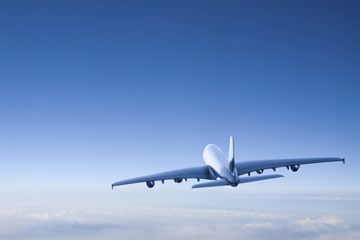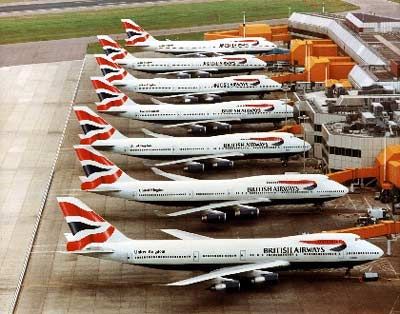Ideally, your first job at a major airline will be the job you retire from. Many folks make their piloting careers at regional airline jobs or in corporate flight departments, and they have their reasons. Usually, lifestyle and seniority issues compel them to stay. Still, major airlines are considered the apex of the career ladder. This is because the pay, job stability, work rules and airplanes are usually the best in the business. As a general rule, the larger the airline, the greater the opportunities, but some small airlines have unique cultures that are particularly appealing to some pilots. Whatever makes you happy, go for it.
As a junior on the bottom of the seniority list, you will most likely be on reserve. You are the backup if things don't go according to plan. In the airline business, unplanned things happen all the time. Pilots get sick at the last minute, for instance. There are reserve pilots for every position an airline has. Reserve pilots have varying windows of "on call" duty, usually in 12-hour blocks. If their pagers go off in this time, they must dash to the airport for their assignment. Reserve pilots need to be near the airport they fly from and they need their uniform and luggage on hand, because at a moment's notice they may have to go to work. They don't know where they might go, or for how long, so they have to pack for all contingencies. Their family lives can be put on hold in an instant. If they are watching their children, they need a solid backup who can quickly step in. Most reserve pilots are expected to be ready to fly at the airport 60 to 90 minutes from when they are first paged.
A reserve pilot might have a few days of reserve alternating with a couple of days off, or the reserve days may be together in a long stretch followed by a long stretch of days off. Depending on a huge range of factors, a reserve pilot could fly every day of reserve, or not fly at all for weeks on end. Some pilots don't mind being on reserve, especially if they live in the city they are based in (called a domicile). To me -- and many share my opinion on this -- reserve is not a pleasant experience. This is especially true if you don't live in your domicile. Then you are called a commuter and likely maintain a "crash pad," usually with other away-from-home pilots.
With a little seniority, you'll rise above reserve to hold a line. A line is a pilot's defined flying schedule. In order of seniority, each pilot in a position chooses his or her line. Different lines of flying will have certain layover cities in them, certain days off or other distinctions. Depending on these factors, as well as the airline, the nature of its business and its working agreement with its pilots, some lines are more desirable than others. Again, seniority is your leverage in making your life more livable.
For most pilots, either on reserve or holding a line, time away from home is a given. Depending on the specifics of the airline and the pilot's personal situation, a pilot could be away from home only during the day or only at night, or might be on the other side of the world for 14 days or more! It takes a special family to cope with the regular absence of one (or both) of its members. Pilots often joke that they're gone so much they've actually been married for only half the time since their wedding date.
A pilot's work day, or duty day, varies depending on a number of factors, such as the number of pilots a plane needs and whether the flight is international or domestic. A long duty day can last 16 hours or, on international flights, have no limit at all. Fortunately, most pilots' working agreements limit duty days to something less than the legal maximum. Scheduled flight time is limited to 8 hours for domestic flights and 12 hours for international flights, unless the crew is augmented with additional relief pilots. The actual flight time is often longer than these limits.
Pilots have a stressful job and follow a difficult career path, but most of them wouldn't be as happy doing anything else. Most pilots have wanted to be a pilot from a very early age. Very rarely does someone without a deep passion for airplanes and their history become a pilot. Lots of people think it would be neat to fly, but those who make it to the cockpits are extremely dedicated to getting there. There are many hurdles, obstacles and patience-testing situations on the road to becoming a pilot.
For more information, check out the links on the next page.




